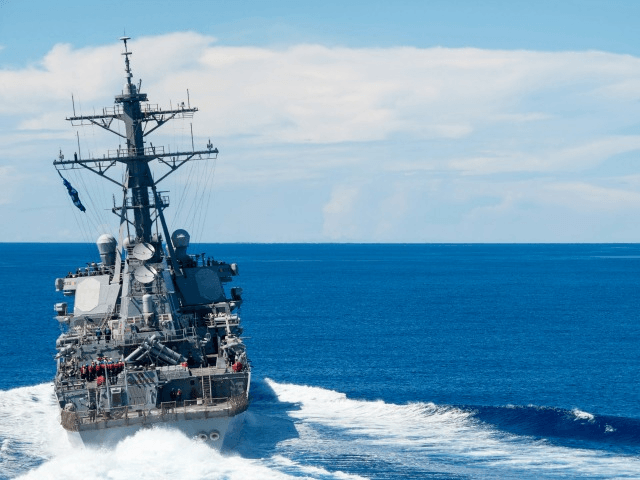The latest freedom of navigation patrol for the U.S. Navy in the South China Sea brought the destroyer USS John S. McCain to within 12 nautical miles of a Chinese artificial island off the Philippine coast on Thursday.
USNI News notes this is the third patrol under the schedule presented to President Trump by the Office of the Secretary of Defense and U.S. Pacific Command. Or at least it was theoretically the third patrol, since the Pentagon has been rather coy about confirming it happened, and the Chinese have forgone their customary complaints.
The muted response is interesting because, as USNI News points out, this was “the least ambiguous challenge to China’s artificial island campaign” yet, although a U.S. defense official plausibly argued that a similar operation in May was more aggressive, since it involved a guided-missile destroyer coming within six nautical miles of the Chinese base and hanging around for 90 minutes, long enough to conduct a man-overboard drill.
Anonymous U.S. officials told Reuters the John S. McCain passed through a string of islets, reefs, and shoals in territory claimed by China before approaching Mischief Reef in the Spratly Islands.
CBS News reports “nothing happened that the U.S. Navy considers unsafe or unprofessional.” The Philippine government was notified in advance of the patrol, although Filipino forces were not directly involved. The Philippine military is thought to have monitored the freedom of navigation operation from a marine base located in a marooned ship on a nearby shoal, which sounds like one of the less appealing postings a Filipino marine could draw.
The Chinese government might be relatively quiescent about this latest patrol, but the Communist Party organ Global Times was moved to complain about it on Thursday. Chinese analysts are quoted portraying freedom of navigation operations as a bullying tactic designed to make China more cooperative on dealing with North Korea—a silly strategy, the Global Times explained, because everyone knows China has already done a magnificent job with North Korea.
“The US is the trouble maker in the South China Sea and has undermined regional stability,” declared Zhang Junshe of the PLA Naval Military Studies Research Institute.
The South China Morning Post ran an editorial in late July denouncing U.S. freedom of navigation patrols as “ineffective” because they don’t seem to have influenced Beijing’s behavior at all, and yet also “risky” because they might push Beijing too far. The problem with suspending them, as even this editorial acknowledges, is that many of America’s regional allies see the operations as tangible reminders of the U.S. commitment to keeping the South China Sea open for business.

COMMENTS
Please let us know if you're having issues with commenting.